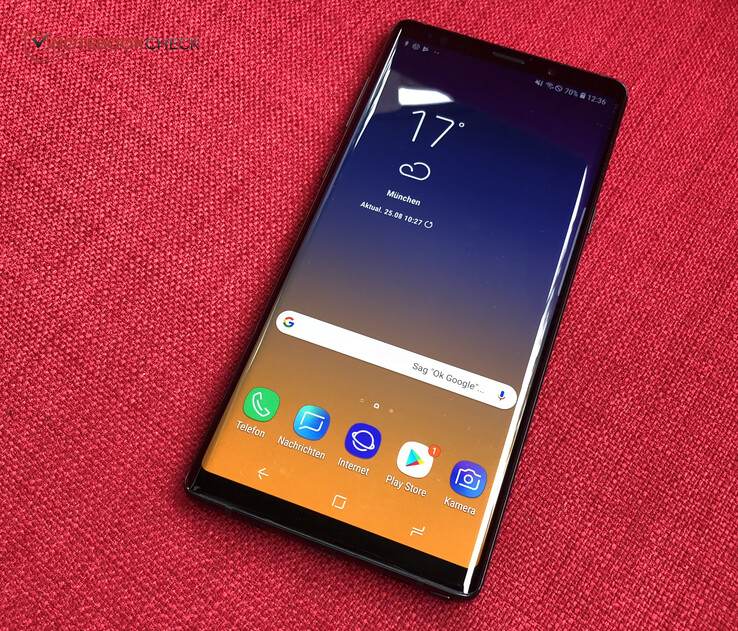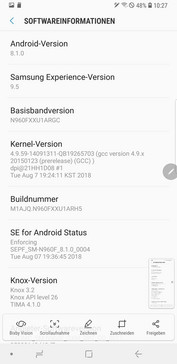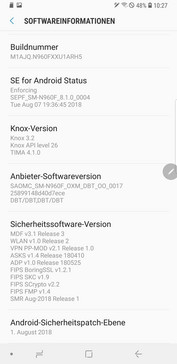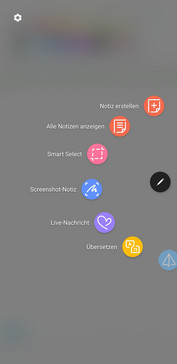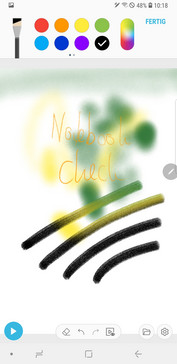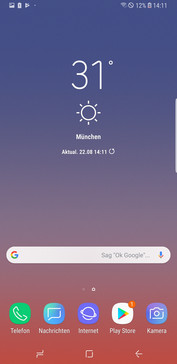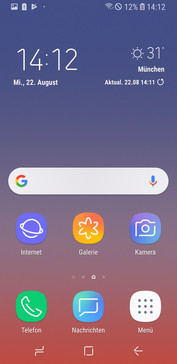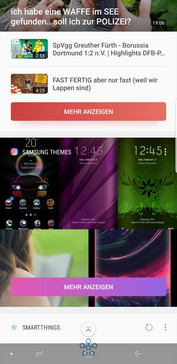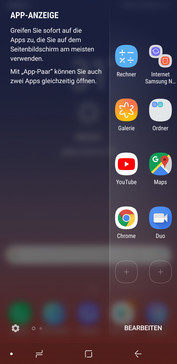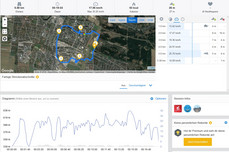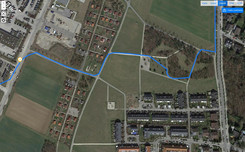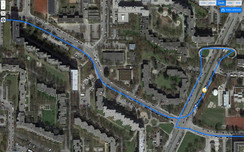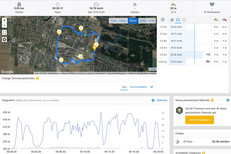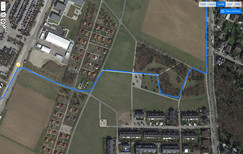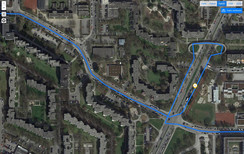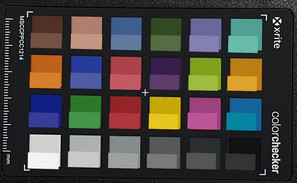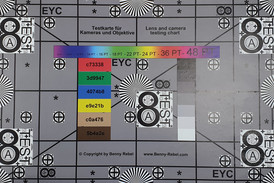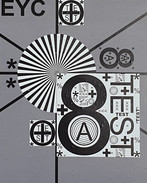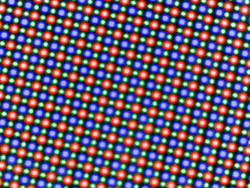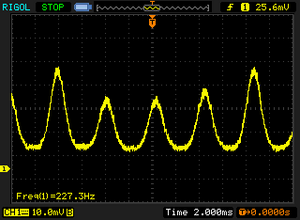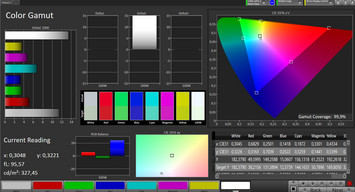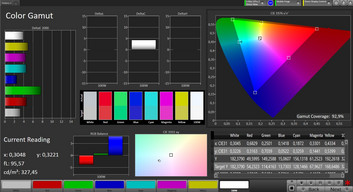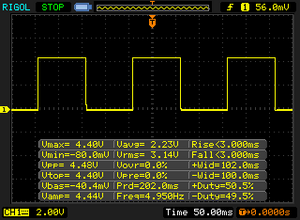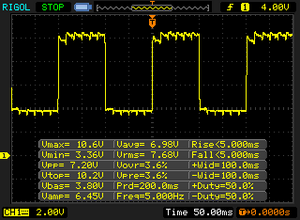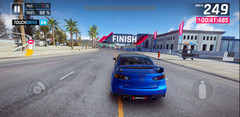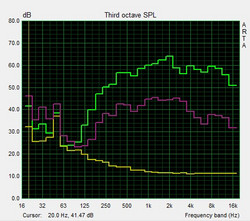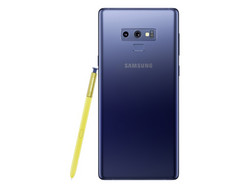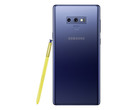Samsung Galaxy Note 9 Smartphone Review
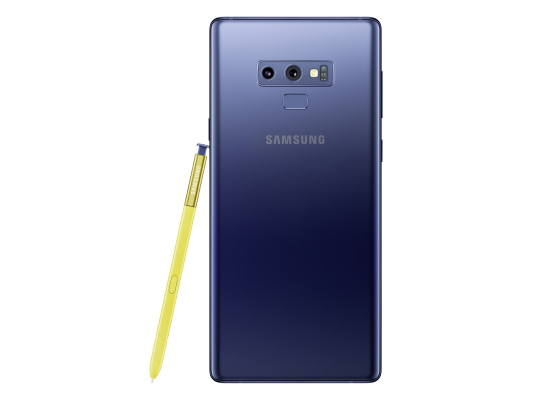
With the Galaxy Note 9, Samsung introduces the first smartphone of the autumn. Once again, the South Korean smartphone maker brings a business phablet with a stylus known as the S Pen to the market. The phablet has been praised profusely thus far: According to DisplayMate, the Note 9 has the best display in a smartphone and it also did very well in the torture test.
We review the European model with 128 GB of storage space and 6 GB of RAM. It comes with Samsung’s Exynos 9810 SoC. However, the American version comes with Qualcomm’s Snapdragon 845.
When compared to its direct predecessor, the Samsung Galaxy Note 8, not much seems to have changed, at least at first glance: There is now an optional version with 8 GB of RAM and 512 GB of storage space, the processor is somewhat faster and the battery has a larger capacity. The mobile Internet is also faster and the camera takes better photos. So, basically, a standard list of improvements. But what is really new here: Well, the S Pen now supports Bluetooth and therefore can be used as a remote control. Is this going to be enough to survive the competition from the behemoths such as the iPhone 8 Plus from Apple and the Huawei Mate 10? Or from the lower-priced competitors such as the OnePlus 6, the LG G7 ThinQ and the HTC U12 Plus. None of the competitors come with a stylus.
Case - the Note smartphone with Gorilla Glass
Visually, the design of the Samsung Galaxy Note 9 has not changed much. It is very reserved. The front of the smartphone is dominated by the display, which is confined by the small top and bottom bezels. The display seems to meld into the sides. However, there are still side bezels, which are merely disguised by the curved glass. The Galaxy Note 9 comes in the following color schemes: Midnight Black and Ocean Blue. The back of the smartphone is made of highly reflective Gorilla Glass 5. A purple color scheme and a copper color scheme also exist on the Internet. However, they are not currently available.
Just like its predecessor, the glass back is very susceptible to fingerprints. However, it is very easy to clean. More and more manufacturers utilize glass surfaces, because they provide better signal strength than metal. Once again, the Samsung Galaxy Note 9 is IP 68 certified. Having said that, this time Samsung does not guarantee that the smartphone will be able to survive submersion under water for an unlimited period of time. It claims on its website in fine print that the Note 9 will only be able to last 30 minutes under water before fluid would enter it.
The case is 1.6 millimeters (~0.63 in) wider and somewhat thicker than that of the predecessor. However, the smartphone is half a millimeter (~0.02 in) shorter and its display is 0.1 inches larger. The Note 9 weighs 6 grams (~0.2 oz) more than its predecessor. All in all, the differences are minimal and are almost unnoticeable in day-to-day use.
The smartphone is still extremely well-built and very rigid. We noticed only one small anomaly: When you shake the smartphone, something is rattling inside. There are no other abnormalities such as creaking or crackling to report.
The stylus is located inside the case. It can be inserted into the case completely. The stylus is ejected out of the case via a spring-loaded mechanism. This mechanism is comparable to what you might see in a ballpen. The stylus can be easily ejected from and put back in the case.
Connectivity – the pricier Note 9 offers an enormous amount of storage space
This year, Samsung’s flagship phablet comes in two storage variants: 128 GB of storage plus 6 GB of RAM or 512 GB of storage plus 8 GB of RAM. Last year, there was only one version, which had 64 GB of storage space and 6 GB of RAM. In terms of the price, both lower-priced variants cost the same, that is 999 Euros ($1157). However, the version with more RAM and more storage space now starts at 1249 Euros ($1447). Currently, only the dual-SIM version is available on Samsung’s website. The single-SIM variant can be purchased on the Internet or from mobile network carriers.
The storage space of the Samsung Galaxy Note 9 can be expanded with the help of a MicroSD card. SD cards can only be formatted as external storage. Nevertheless, apps can be stored on the MicroSD card.
The USB-C port is located on the bottom of the device. It operates at USB 3.1 speeds and supports USB OTG. There is also a 3.5-mm audio jack, which is a rarity with high-end smartphones these days. NFC and ANT+ are also supported. The latter allows to wirelessly monitor a range of devices. An IR sensor is not provided.
Software – up-to-date Android and a lot of additional apps
The Samsung Galaxy Note 9 runs Android 8.1. An update to Android 9 should take place soon, because the Note series is usually kept up to date when it comes to software. As soon as the device is turned on, an update is available, which installs the most recent security patches (security patch level: August 1, 2018). Samsung Experience 9.1 serves as the system launcher. It expands the standard Android functionality and brings optimization for the S Pen.
The Samsung Galaxy Note 9 comes with the always-on-display feature. In this mode, the display is always on, unlike with many other smartphones. Here, the screen displays the clock, the date, notifications and the music player, all in monochrome with a few accent colors. There are many additional options in the settings menu, which are not found with other manufacturers: For example, the edges of the display can be set to light up when someone is calling or when there are new notifications. There is also the ability to set the screen to stay on as long as you are looking at it. Additionally, there is a one-handed mode, plus other functions such as multi-windows (this function allows to open multiple apps in different windows), video optimization (this allows users to adjust the sensitivity of the touchscreen and to lower the resolution of the display), simple mode (in this mode, only the basic functions are available, which is why it is perfect for people who are not familiar with smartphones or those who do not need that many functions).
The Note 9 comes with a lot of apps preinstalled. Besides Samsung’s proprietary apps, there are also third-party apps such as the Facebook app, Microsoft Office and LinkedIn. These apps cannot be permanently uninstalled, they can only be disabled. The proprietary apps include Samsung’s Internet browser, an app for customizing the home screen, Samsung’s app store and Samsung Health, a fitness tracker. Fortunately, Samsung’s own apps can be completely uninstalled without any hassle.
The home screen can only be used in portrait mode. There is a bar on the right side of the screen, where most often used apps are displayed. Your favorite apps can also be added to this bar. If you swipe right on the home screen, you will get to Bixby Home, where weather forecasts, notifications and other things of interest are grouped together. There is a dedicated Bixby button on the right side of the device, which launches Bixby Assistant.
As soon as you take the S Pen out of the case, the user interface adjusts itself: Now you can write memos even in standby mode, and there is a stylus icon on the screen, which allows quick access to a number of stylus-operated apps. However, you can also add your own apps to this half-wheel. We are especially pleased with the app called PENUP, in which you can make very creative drawings. Here is something practical: If you remove the stylus too far from the device when the screen is turned off, a warning message pops up that tells you that the stylus is not inserted.
Communication and GPS – Wi-Fi of the Samsung Galaxy Note 9 could have been faster
Once again, Samsung has pulled out all the stops in terms of communications modules: The Note 9 supports all current Wi-Fi standards, has a 4x4 MIMO antenna, operates at Category 18 LTE speeds (download: up to 1.2 GB/s) and features support for 15 LTE bands, which is why the Note 9 can function in LTE networks all over the world. Even though the specifications sound good, the Note 9 performed worse than many other high-end smartphones in our standardized Wi-Fi tests with the Router Linksys EA8500. When it comes to reception strength, the Note 9 does as well as its predecessor. However, it does much worse when it comes to transfer speeds. The OnePlus 6 and the LG G7 ThinQ deliver good results both when uploading and when downloading data. Anyhow, the Samsung Galaxy Note 9 has quite a fast Wi-Fi module: Websites load very fast, but images, sometimes, take a while to load. In close proximity to the router, the signal strength is ideal. When the smartphone is separated from the router by 10 meters (~33 ft) and three walls, the signal strength fluctuates between 3 out of 4 bars and perfect strength. Websites load just as fast when you are away from the router as when you are standing right next to it.
The Note 9 is very good when it comes to LTE reception: In the German D2 network, the smartphone has perfect reception even inside most buildings.
Inside a steel-reinforced concrete building, the Note 9 is only able to establish a connection with the satellites at the window, Here, it has a margin of error of 16 meters (~52 ft). Outside, the margin of error falls down to roughly 6 meters (~20 ft), which is a good, but not exceptional result. Our location is immediately determined in Google Maps and the compass also points in the right direction.
In order to determine how accurate our review device is when it comes to geo-location, we take it with us on a bike ride. During this ride, we are also accompanied by the professional navigator Garmin Edge 520. When it comes to navigation, the Garmin Edge 520 is a clear winner, but the Note 9 comes close on many occasions. The Note 9 did very well during the crossing of the bridge, which is a problematic area for many other devices. It also puts us in the right lane. However, sometimes we were placed outside of the road and some turns and curves were cut as well.
Those who do not need the absolute accuracy of a professional navigator and want a navigator for casual use will be more than happy with the Samsung Galaxy Note 9.
Telephony and Call Quality - The Note 9 supports VoLTE
The Note 9 comes with a proprietary Samsung phone app. However, this app resembles the standard Android phone app, which is why Android users who have never had a Samsung smartphone will be right at home with it. A special feature is the “places” tab that allows you to see restaurants and other such facilities nearby, which can be contacted directly from the app to, for example, reserve a table.
The call quality of the Note 9 is pretty good. At full volume, the voice of the call partner is easy to understand even in very noisy environments. However, under normal circumstances, the caller sounds way too loud at maximum volume. The sound quality is not as clear as we would have liked, and there is also some background noise, which pops up from time to time. Having said that, the caller’s voice is reproduced very well, both when they are talking loudly and when they are speaking quietly. Noise cancellation works more or less well.
The smartphone supports VoLTE and VoWiFi.
Cameras – Sharp times with the Galaxy Note 9
Samsung is famous for good image sensors in its flagship smartphones. The Galaxy Note 9 is no exception, and Samsung also expands the feature set: The Note 9 can recognize scenes automatically and apply appropriate settings. It can also recognize and notify you when people are smiling or when the camera lens is dirty. There are also AR effects, which can be added to a certain part of an image, such as a face. The Note 9 also features animated emojis similar to the Apple iPhone X.
The Note 9 has the same camera setup as the Samsung Galaxy S9 and S9 Plus: The dual-camera system with two 12 MP sensors on the back with a variable aperture, 2x zoom and dual optical image stabilization. There is an 8 MP camera with autofocus on the front of the device.
Here we are going to talk a bit more about the front-facing camera, which takes well-detailed and sharp photos. The dynamic range in dark scenes could have been higher, but overall the front-facing camera does not overblow bright areas and takes very contrasty pictures. Besides simple selfies, the camera also supports a number of AR effects and can apply a Bokeh effect to images via software. This Bokeh effect looks very good under normal lighting conditions. For a group selfie, the smartphone can be used in portrait mode to produce a panoramic shot.
The main camera provides even more features: Besides panoramic shots and Pro mode, in which many parameters of the image can be adjusted, there is also a Bokeh mode, in which the background of an image can be blurred. This works very well, thanks to the secondary camera. The HDR mode activates automatically and there is a short video preview for each shot, which is quite similar to what you might see on the latest iPhones. There are also beautiful effects for images in the gallery app, which make images move like in a Harry Potter film.
The image quality of the rear camera is very good under normal lighting conditions: The details are clear and the images, overall, look bright and colorful. The photos taken under poor lighting conditions also look good. Moreover, the images do not suffer from a lot of noise.
Video can be shot at a lot of different resolutions, but the maximum video resolution is 4K@60. Optical image stabilization can be disabled in the settings menu. There is also a 720p super slow motion mode. Here, a 0.4 second shot is stretched to 12 seconds with one second at normal speed before and after the slow-motion clip. Videos shot in slow-motion mode play 30 times slower than normal clips. We linked a slo-mo clip below. This feature is easy to use because the recording starts automatically when the smartphone detects motion. Normal videos also look very good. The exposure adjusts very fast to changing lighting conditions. However, this is not needed very often, because the Note 9’s camera has a very high dynamic range.
The Samsung phablet reproduces our test chart very well. The only blemish is the slightly blurred text before the red background. The sharpness is also very good at the edges. The colors are slightly too dim, but other than that, they are quite accurately reproduced.
Accessories and Warranty - Samsung offers a lot of accessories for the Note smartphone
The chic box contains the following accessories: A fast charger with an appropriate USB cable, an AKG headset with a 3.5-mm plug, a USB OTG adapter, a USB-C to Micro-USB adapter and a replacement tip for the S Pen.
Furthermore, Samsung also offers a wide range of additional accessories for the Note 9 such as covers and docks. There is the LED View Cover, which allows parts of the screen to shine through. This way, a clock or other information can be displayed on the cover. The price of covers ranges from 20 Euros ($23) for a simple plastic case to 70 Euros ($81) for the LED View Cover. An additional S Pen can be had for 40 Euros ($46). The S Pens come in 5 different color schemes. A wireless charging pad for the Note 9 costs 60 Euros ($69).
With the help of Samsung’s DeX products, such as a cable or a dock, the Galaxy Note 9 can be connected to an external monitor and used as a mini computer.
Samsung provides a 2-year warranty for its Note smartphones, as long as you purchase it as a private customer. Please see our Guarantees, Return policies and Warranties FAQ for country-specific information.
Input Devices and Handling – The S Pen is now even more revolutionary
The Note 9 comes with Samsung’s proprietary keyboard app, which resembles a lot the keyboard app found on iOS devices. The Samsung keyboard offers a lot of features and is easy to type on. It can be customized with the help of themes. However, it is not as customizable as some other keyboard apps. The size of the keyboard can be increased or reduced in the settings.
The touchscreen is very accurate, but it does not always reliably recognize inputs at the edges of the 2.5D curved glass. This should not be a problem, because you are not going to be using this area to make inputs very often. If you use a screen protector, you can increase the sensitivity of the touchscreen, if it does not feel responsive enough. This can also come in handy during the winter, when you have your gloves on.
The navigation elements for the menu are located on the screen. The position and color of these elements can be changed. There is a virtual button on the home screen, which can be used to unlock the device. For this, you have to press this button with some force, until you feel the vibration, which stimulates the feel of an actual button. You can change how much force you need to apply for this button to work in the settings menu.
There are physical buttons on the left and right sides of the device: On the left, there are the volume rocker and the dedicated Bixby button. The power button is located on the right. The buttons are small and unobtrusive. They also have a clear actuation point.
The S Pen is an important control element and the main distinguishing feature of the Note 9. It Is located on the bottom of the device on the right side. When you pull it out you will have access to the features that we highlighted in the Software section. According to Samsung, the S Pen supports 4096 pressure levels and has a 0.7-mm tip. This generation of S Pens supports Bluetooth Low Energy, which opens up a whole new realm of functionality: You can use the button on the pen to takes pictures or play/pause video remotely. You can also use it to switch slides during a Power Point presentation. You can customize what pressing the button on the S Pen does in different apps. However, at the moment, not all apps support the S Pen. That being said, it is supported in all the important applications. Above all, the S Pen is an accurate tool for taking notes and drawing pictures. All in all, the remote functionality is an additional input method that was not present in older Note smartphones.
Display - Very bright with the ambient light sensor engaged
Aside from a small increase in the screen size, nothing much has changed when compared to the Note 8: A 6.4-inch Super AMOLED screen with a native resolution of 2960x1440 is the best display on the market. As with the predecessor, the maximum brightness that can be set manually tops out at 330 cd/m². A higher brightness can be achieved with the ambient light sensor engaged. Here, as with the predecessor, the brightness reaches 500 cd/m². The display of the Note 9 has a better brightness distribution than that of the Note 8. Thanks to the almost perfect brightness distribution of 96%, even solid colors appear uniform. This is not surprising, because every pixel can be individually turned on and off in AMOLED displays.
According to DisplayMate, the screen of the Note 9 is much brighter than that of the predecessor. However, we were unable to verify this claim in our testing. The experts also claim that the display is so accurate that any deviations from the reference color space should not be perceivable with the naked eye. We look more closely at this in our own lab.
| |||||||||||||||||||||||||
Brightness Distribution: 96 %
Center on Battery: 499 cd/m²
Contrast: ∞:1 (Black: 0 cd/m²)
ΔE ColorChecker Calman: 4.62 | ∀{0.5-29.43 Ø4.77}
ΔE Greyscale Calman: 2.2 | ∀{0.09-98 Ø5}
144.6% sRGB (Calman 2D)
Gamma: 2.103
CCT: 6115 K
| Samsung Galaxy Note 9 Super AMOLED, 2960x1440, 6.4" | Apple iPhone 8 Plus IPS, 1920x1080, 5.5" | HTC U12 Plus Super LCD 6, 2880x1440, 6" | Huawei Mate 10 Pro OLED, 2160x1080, 6" | OnePlus 6 Optic AMOLED, 2280x1080, 6.3" | LG G7 ThinQ IPS, 3120x1440, 6.1" | Samsung Galaxy Note 8 Super AMOLED, 2960x1440, 6.3" | |
|---|---|---|---|---|---|---|---|
| Screen | 30% | 23% | 29% | 10% | 4% | 14% | |
| Brightness middle (cd/m²) | 499 | 559 12% | 395 -21% | 629 26% | 430 -14% | 974 95% | 530 6% |
| Brightness (cd/m²) | 506 | 538 6% | 402 -21% | 636 26% | 437 -14% | 975 93% | 536 6% |
| Brightness Distribution (%) | 96 | 90 -6% | 90 -6% | 94 -2% | 87 -9% | 96 0% | 93 -3% |
| Black Level * (cd/m²) | 0.38 | 0.37 | 0.49 | ||||
| Colorchecker dE 2000 * | 4.62 | 1.3 72% | 1.6 65% | 1.7 63% | 2.3 50% | 5.4 -17% | 2.6 44% |
| Colorchecker dE 2000 max. * | 10.91 | 2.7 75% | 3.4 69% | 3.6 67% | 4.6 58% | 13.1 -20% | 5.1 53% |
| Greyscale dE 2000 * | 2.2 | 1.8 18% | 1.1 50% | 2.4 -9% | 2.4 -9% | 5 -127% | 2.7 -23% |
| Gamma | 2.103 105% | 2.25 98% | 2.14 103% | 2.15 102% | 2.28 96% | 2.31 95% | 2.04 108% |
| CCT | 6115 106% | 6797 96% | 6536 99% | 6337 103% | 6160 106% | 7480 87% | 6206 105% |
| Contrast (:1) | 1471 | 1068 | 1988 |
* ... smaller is better
Screen Flickering / PWM (Pulse-Width Modulation)
| Screen flickering / PWM detected | 227 Hz | ||
The display backlight flickers at 227 Hz (worst case, e.g., utilizing PWM) . The frequency of 227 Hz is relatively low, so sensitive users will likely notice flickering and experience eyestrain at the stated brightness setting and below. In comparison: 53 % of all tested devices do not use PWM to dim the display. If PWM was detected, an average of 8081 (minimum: 5 - maximum: 343500) Hz was measured. | |||
There is not much to be said about the contrast ratio and the black value of the screen: Because AMOLED displays can switch off individual pixels to display perfect black, the contrast ratio is theoretically infinite and the black value is zero. This is why the colors look very good. The screen supports HDR10 and therefore can play back HDR content with an expanded dynamic range and tighter brightness control.
There are several color profiles in the display settings. The “Adaptive Display” profile is selected by default. It serves to optimize the color reproduction. There are also the “AMOLED cinema” profile, the “AMOLED photo” profile and the “Basic” profile. The “AMOLED cinema” profile provides the most vivid colors, whereas the “Basic” profile provides a very natural color reproduction. The color reproduction can also be adjusted manually. A blue light filter is also provided. However, the blue light filter and color profiles cannot be used at the same time.
The display flickers at all brightness levels, which is not unusual for AMOLED screens: The screen is switched on and off in very quick succession for brightness control. Susceptible individuals should try out the display before committing to purchase.
We use a spectrophotometer running SpectraCal's CalMAN software to examine color accuracy more closely. The sRGB color space as well as the DCI-P3 color space are covered completely. However, the Note 9 can only cover 93% of the Adobe RGB color space. This result should be seen as a clue, because the spectrophotometer cannot assess this particular color space accurately. The grayscale is reproduced very accurately straight out of the box. The display suffers from a very slight bluish cast. The “AMOLED cinema” color profile provides the most accurate color reproduction. Nonetheless, even with this profile, the red hues are not reproduced very faithfully when compared to the reference color space sRGB.
The color reproduction of the display can be adjusted by the user. This opens up the possibility that it can be improved even further.
Display Response Times
| ↔ Response Time Black to White | ||
|---|---|---|
| 6 ms ... rise ↗ and fall ↘ combined | ↗ 3 ms rise | |
| ↘ 3 ms fall | ||
| The screen shows very fast response rates in our tests and should be very well suited for fast-paced gaming. In comparison, all tested devices range from 0.1 (minimum) to 240 (maximum) ms. » 17 % of all devices are better. This means that the measured response time is better than the average of all tested devices (20.2 ms). | ||
| ↔ Response Time 50% Grey to 80% Grey | ||
| 10 ms ... rise ↗ and fall ↘ combined | ↗ 5 ms rise | |
| ↘ 5 ms fall | ||
| The screen shows good response rates in our tests, but may be too slow for competitive gamers. In comparison, all tested devices range from 0.165 (minimum) to 636 (maximum) ms. » 22 % of all devices are better. This means that the measured response time is better than the average of all tested devices (31.6 ms). | ||
We highly recommend that you enable the ambient light sensor when you are outside, because it allows the display to reach a much higher maximum brightness and because it is very fast and reliable. The Note 9 can be used outside. However, strong reflections may make reading screen content rather difficult.
The viewing angles of the display are excellent: No matter from which angle you look, the colors and the brightness do not change.
Performance - Fast, but not the fastest
We have already seen the Samsung Exynos 9810 in the Samsung Galaxy S9 and the S9 Plus. 8 cores in two clusters with a maximum speed of up to 2.9 GHz provide a great deal of performance. However, the Exynos 8910 is beaten slightly in the synthetic benchmarks by the Qualcomm Snapdragon 845, which is used in the OnePlus 6 and the HTC U12 Plus. Nevertheless, in everyday use, we did not observe any significant differences in performance. The Samsung smartphone is extremely responsive, which makes it a joy to use.
The ARM Mali-G72 MP18 serves as the GPU. It supports all the latest APIs and is quite future-proof, which is good news for gamers and people who use graphically intensive applications. The iPhone 8 Plus and the Samsung phablet perform very similarly in the gaming benchmarks. There are no significant differences in this area as well.
| AnTuTu v7 - Total Score (sort by value) | |
| Samsung Galaxy Note 9 | |
| HTC U12 Plus | |
| Huawei Mate 10 Pro | |
| OnePlus 6 | |
| LG G7 ThinQ | |
| Samsung Galaxy Note 8 | |
| Average Samsung Exynos 9810 (236552 - 250577, n=3) | |
| PCMark for Android | |
| Work performance score (sort by value) | |
| Samsung Galaxy Note 9 | |
| HTC U12 Plus | |
| Huawei Mate 10 Pro | |
| OnePlus 6 | |
| LG G7 ThinQ | |
| Samsung Galaxy Note 8 | |
| Average Samsung Exynos 9810 (5736 - 6571, n=4) | |
| Work 2.0 performance score (sort by value) | |
| Samsung Galaxy Note 9 | |
| HTC U12 Plus | |
| Huawei Mate 10 Pro | |
| OnePlus 6 | |
| LG G7 ThinQ | |
| Samsung Galaxy Note 8 | |
| Average Samsung Exynos 9810 (5184 - 5851, n=4) | |
| Basemark ES 3.1 / Metal - offscreen Overall Score (sort by value) | |
| Samsung Galaxy Note 9 | |
| Huawei Mate 10 Pro | |
| OnePlus 6 | |
| LG G7 ThinQ | |
| Samsung Galaxy Note 8 | |
| Average Samsung Exynos 9810 (1436 - 1481, n=3) | |
| Average of class Smartphone (205 - 7731, n=34, last 2 years) | |
| Basemark GPU 1.1 | |
| Vulkan Medium Native (sort by value) | |
| Samsung Galaxy Note 9 | |
| Huawei Mate 10 Pro | |
| OnePlus 6 | |
| LG G7 ThinQ | |
| Average Samsung Exynos 9810 (n=1) | |
| 1920x1080 Vulkan Medium Offscreen (sort by value) | |
| Samsung Galaxy Note 9 | |
| Huawei Mate 10 Pro | |
| OnePlus 6 | |
| LG G7 ThinQ | |
| Average Samsung Exynos 9810 (n=1) | |
| 1920x1080 OpenGL Medium Offscreen (sort by value) | |
| Samsung Galaxy Note 9 | |
| Huawei Mate 10 Pro | |
| OnePlus 6 | |
| LG G7 ThinQ | |
| Average Samsung Exynos 9810 (n=1) | |
| VRMark - Amber Room (sort by value) | |
| Samsung Galaxy Note 9 | |
| Huawei Mate 10 Pro | |
| OnePlus 6 | |
| LG G7 ThinQ | |
| Average Samsung Exynos 9810 (n=1) | |
| JetStream 1.1 - Total Score | |
| Apple iPhone 8 Plus | |
| LG G7 ThinQ (Chrome 66) | |
| OnePlus 6 (Chrome 66) | |
| HTC U12 Plus (Chrome 66) | |
| Samsung Galaxy Note 8 (Samsung Browser 6.0) | |
| Average Samsung Exynos 9810 (62.9 - 69.6, n=4) | |
| Samsung Galaxy Note 9 (Chrome 68) | |
| Huawei Mate 10 Pro (Chrome 61) | |
| Octane V2 - Total Score | |
| Average of class Smartphone (2228 - 126661, n=194, last 2 years) | |
| Apple iPhone 8 Plus | |
| OnePlus 6 (Chrome 66) | |
| LG G7 ThinQ (Chrome 66) | |
| HTC U12 Plus (Chrome 66) | |
| Samsung Galaxy Note 9 (Chrome 68) | |
| Average Samsung Exynos 9810 (12933 - 15233, n=4) | |
| Samsung Galaxy Note 8 (Samsung Browser 6.0) | |
| Huawei Mate 10 Pro (Chrome 61) | |
| Mozilla Kraken 1.1 - Total | |
| Huawei Mate 10 Pro (Chrome 61) | |
| Samsung Galaxy Note 9 (Chrome 68) | |
| Average Samsung Exynos 9810 (2060 - 3189, n=4) | |
| LG G7 ThinQ (Chrome 66) | |
| OnePlus 6 (Chrome 66) | |
| HTC U12 Plus (Chrome 66) | |
| Samsung Galaxy Note 8 (Samsung Browser 6.0) | |
| Average of class Smartphone (257 - 28190, n=154, last 2 years) | |
| Apple iPhone 8 Plus | |
| WebXPRT 2015 - Overall | |
| Apple iPhone 8 Plus | |
| HTC U12 Plus (Chrome 66) | |
| OnePlus 6 (Chrome 66) | |
| LG G7 ThinQ (Chrome 66) | |
| Samsung Galaxy Note 9 (Chrome 68) | |
| Average Samsung Exynos 9810 (163 - 202, n=3) | |
| Samsung Galaxy Note 8 (Samsung Browser 6.0) | |
| Huawei Mate 10 Pro (Chrome 61) | |
* ... smaller is better
Our model of the Galaxy Note 9 comes with 128 GB of UFS 2.1 memory. Here, the Samsung smartphone meets the requirements for a high-end device, because it provides very good read and write speeds. When compared to the predecessor not much has changed, except for the random access speeds, which have improved significantly.
We use our reference-grade MicroSD card Toshiba Exceria Pro M501 to test the performance of the MicroSD card reader. Here, the Note 9 outperforms its predecessor, but not by a huge margin.
| Samsung Galaxy Note 9 | HTC U12 Plus | Huawei Mate 10 Pro | OnePlus 6 | LG G7 ThinQ | Samsung Galaxy Note 8 | Average 128 GB UFS 2.1 Flash | Average of class Smartphone | |
|---|---|---|---|---|---|---|---|---|
| AndroBench 3-5 | 63% | 170% | -0% | -5% | -10% | 95% | 672% | |
| Sequential Read 256KB (MB/s) | 805 | 709 -12% | 732 -9% | 726 -10% | 695 -14% | 797 -1% | 761 ? -5% | 2235 ? 178% |
| Sequential Write 256KB (MB/s) | 196 | 195.8 0% | 208.7 6% | 201.4 3% | 176.4 -10% | 205.9 5% | 296 ? 51% | 1871 ? 855% |
| Random Read 4KB (MB/s) | 134 | 118.1 -12% | 132.3 -1% | 137 2% | 110.5 -18% | 122.5 -9% | 154 ? 15% | 297 ? 122% |
| Random Write 4KB (MB/s) | 21 | 104.2 396% | 164.4 683% | 21.8 4% | 23.26 11% | 14.55 -31% | 130.4 ? 521% | 343 ? 1533% |
| Sequential Read 256KB SDCard (MB/s) | 77 ? | 84.3 ? 9% | 84.7 ? 10% | 67.9 ? -12% | 76 ? -1% | |||
| Sequential Write 256KB SDCard (MB/s) | 66.7 ? | 63.6 ? -5% | 62.7 ? -6% | 59.3 ? -11% | 59.6 ? -11% |
Games - 60 FPS gaming on the Note 9
The Samsung Galaxy Note 9 can run video games at 60 FPS, as long as they support it. Here, we would like to point out “Arena of Valor”. Except for one big drop in the frame rate, the game ran smoothly all of the time. “PUBG Mobile”, on the other hand, does not run smoothly on high settings. It may be due to the fact that “PUBG Mobile” is still in a beta state. “Asphalt 9” ran perfectly well on low settings, but occasionally stuttered with the high settings.
It should be noted that we benchmarked all of our games at the native screen resolution. If you lower the resolution, you will get a much smoother gaming experience. Moreover, the reduction in resolution does not seem as noticeable on a small smartphone screen as it would on a large gaming PC monitor.
We use “Temple Run” to see how well the touchscreen and the motion sensor work. The answer: They work perfectly.
| Asphalt 9: Legends | |||
| Settings | Value | ||
| High Quality | 30 fps | ||
| Standard / low | 30 fps | ||
| PUBG Mobile | |||
| Settings | Value | ||
| Smooth | 40 fps | ||
| HD | 40 fps | ||
| Arena of Valor | |||
| Settings | Value | ||
| min | 60 fps | ||
| high HD | 60 fps | ||
Emissions - Samsung smartphone with thermal throttling and stereo speakers
Temperature
If you use the Note 9 lightly, then it will get only minimally hot: We measured a maximum temperature of 34.2 °C (~94 °F) during idle operation. Under sustained load, the temperatures climb quite high and reach up to 47 °C (~117 °F). This is an uncomfortable temperature.
Unfortunately, the Note 9 is unable to maintain its full performance under continuous load: In the GFXBench battery test, in which the same sequence is run 30 times in a row, the Note 9 throttles down by about 30% after a few benchmark runs. It is likely that the device throttles down to prevent the SoC from overheating.
(-) The maximum temperature on the upper side is 45.9 °C / 115 F, compared to the average of 35.2 °C / 95 F, ranging from 21.9 to 247 °C for the class Smartphone.
(-) The bottom heats up to a maximum of 47 °C / 117 F, compared to the average of 34 °C / 93 F
(±) In idle usage, the average temperature for the upper side is 33.6 °C / 92 F, compared to the device average of 32.9 °C / 91 F.
Speakers
There is an improvement in terms of sound quality: The Samsung Galaxy Note 9 uses the ear speaker in combination with the bottom speaker to produce a stereo effect. The speakers were tuned by the Austrian audio company AKG. Moreover, thanks to support for Dolby Atmos, the Note 9 can produce virtual surround sound. An equalizer is also included. Right out of the box, the Note 9 sounds very good. However, it is not as loud as some other smartphones. The mids and the highs are especially well reproduced. The speakers do not sound tinny and the highs never sound unpleasant.
If you connect a headset to the smartphone, then you will get more options: Here, you can simulate the sound of a valve amplifier or the echo of a concert hall. With the help of Sound Adapt, you can adjust the sound in accordance with your hearing abilities with the help of a hearing test. In any case, the sound quality you get with the headphones is very good. Bluetooth also provides a very good sound reproduction.
Samsung Galaxy Note 9 audio analysis
(-) | not very loud speakers (71.6 dB)
Bass 100 - 315 Hz
(-) | nearly no bass - on average 15.6% lower than median
(±) | linearity of bass is average (10.1% delta to prev. frequency)
Mids 400 - 2000 Hz
(+) | balanced mids - only 2.9% away from median
(+) | mids are linear (4.3% delta to prev. frequency)
Highs 2 - 16 kHz
(+) | balanced highs - only 1.6% away from median
(+) | highs are linear (5.7% delta to prev. frequency)
Overall 100 - 16.000 Hz
(±) | linearity of overall sound is average (16.2% difference to median)
Compared to same class
» 6% of all tested devices in this class were better, 5% similar, 90% worse
» The best had a delta of 11%, average was 35%, worst was 134%
Compared to all devices tested
» 25% of all tested devices were better, 5% similar, 69% worse
» The best had a delta of 4%, average was 24%, worst was 134%
Apple iPhone 8 Plus audio analysis
(±) | speaker loudness is average but good (80.1 dB)
Bass 100 - 315 Hz
(-) | nearly no bass - on average 17.1% lower than median
(±) | linearity of bass is average (7.5% delta to prev. frequency)
Mids 400 - 2000 Hz
(+) | balanced mids - only 2.7% away from median
(+) | mids are linear (4.5% delta to prev. frequency)
Highs 2 - 16 kHz
(+) | balanced highs - only 4.3% away from median
(+) | highs are linear (3.8% delta to prev. frequency)
Overall 100 - 16.000 Hz
(±) | linearity of overall sound is average (16.5% difference to median)
Compared to same class
» 7% of all tested devices in this class were better, 5% similar, 87% worse
» The best had a delta of 11%, average was 35%, worst was 134%
Compared to all devices tested
» 27% of all tested devices were better, 6% similar, 67% worse
» The best had a delta of 4%, average was 24%, worst was 134%
Power Management - Great battery life thanks to a big battery
Energy Consumption
In general, the Samsung Galaxy Note 9 draws a little bit more power than its predecessor. We use the highest possible screen resolution in this test as well. If you reduce the display resolution, then you will get a lower power draw at the expense of some clarity. However, the energy consumption of the Note 9 is on a normal level for this kind of device, anyway. In fact, the maximum power draw of 7.6 watts is actually quite low. That being said, the maximum power consumption when idle, but with the brightness maxed out and the communications modules engaged, peaks at 3.7 watts. All in all, a mixed result.
| Samsung Galaxy Note 9 4000 mAh | Apple iPhone 8 Plus 2691 mAh | HTC U12 Plus 3500 mAh | Huawei Mate 10 Pro 4000 mAh | OnePlus 6 3300 mAh | LG G7 ThinQ 3000 mAh | Samsung Galaxy Note 8 3300 mAh | Average Samsung Exynos 9810 | Average of class Smartphone | |
|---|---|---|---|---|---|---|---|---|---|
| Power Consumption | 6% | -3% | 25% | 29% | 3% | 30% | 18% | 1% | |
| Idle Minimum * (Watt) | 0.9 | 0.72 20% | 0.77 14% | 0.85 6% | 0.6 33% | 1.16 -29% | 0.73 19% | 0.783 ? 13% | 0.847 ? 6% |
| Idle Average * (Watt) | 1.9 | 2.45 -29% | 2.18 -15% | 1.15 39% | 1 47% | 1.98 -4% | 1.44 24% | 1.315 ? 31% | 1.446 ? 24% |
| Idle Maximum * (Watt) | 3.7 | 2.52 32% | 2.21 40% | 1.23 67% | 1.6 57% | 2.07 44% | 1.53 59% | 1.903 ? 49% | 1.63 ? 56% |
| Load Average * (Watt) | 5.3 | 3.84 28% | 6.25 -18% | 4.12 22% | 4.3 19% | 4.51 15% | 4.56 14% | 5.76 ? -9% | 6.95 ? -31% |
| Load Maximum * (Watt) | 7.6 | 9.02 -19% | 10.16 -34% | 8.42 -11% | 8.6 -13% | 8.3 -9% | 5.09 33% | 7.06 ? 7% | 11.3 ? -49% |
* ... smaller is better
Battery Life
The Note 9 with its new 4000-mAh battery does very well in our Wi-Fi test: Here, it lasts for 13 hours, which is significantly longer than the predecessor. Again, if you lower the screen resolution you will get longer battery life. After the battery fiasco that Samsung had with the Note 7 and the low-capacity battery in the Note 8, it is nice to see that the South Korean giant once again trusts itself enough to put a large-capacity battery into its flagship phablet. This is the kind of battery that a device like this really deserves.
The included Quick Charge charger take less then 2 hours to recharge the battery. Thanks to the glass back, the smartphone also supports Qi wireless charging and Powermat.
| Samsung Galaxy Note 9 4000 mAh | Apple iPhone 8 Plus 2691 mAh | HTC U12 Plus 3500 mAh | Huawei Mate 10 Pro 4000 mAh | OnePlus 6 3300 mAh | LG G7 ThinQ 3000 mAh | Samsung Galaxy Note 8 3300 mAh | |
|---|---|---|---|---|---|---|---|
| Battery runtime | -13% | -34% | 6% | -10% | -13% | -33% | |
| Reader / Idle (h) | 28.1 | 34.8 24% | 24.2 -14% | 29.1 4% | 30.1 7% | 27.7 -1% | 18.9 -33% |
| H.264 (h) | 14.9 | 12.2 -18% | 7.7 -48% | 15.5 4% | 13.2 -11% | 15.1 1% | 11 -26% |
| WiFi v1.3 (h) | 13.2 | 11 -17% | 8.5 -36% | 13.6 3% | 12.7 -4% | 9.9 -25% | 7.9 -40% |
| Load (h) | 5.9 | 3.5 -41% | 3.8 -36% | 6.6 12% | 4.1 -31% | 4.3 -27% | 4.1 -31% |
Verdict – For some users, the Galaxy Note 9 does not have much in the way of competition
Samsung once again delivers the business smartphone of the year, nothing less is to be expected. Even the owners of the Note 8 have a lot to gain by switching to the Note 9. However, this does not have a lot to do with the S Pen: The new remote control functionality is neat, but not revolutionary. What is more important is that the Galaxy Note 9 has a significantly bigger battery than the predecessor, which can last for several days on a single charge.
There are also drawbacks such as throttling under sustained load and all the preinstalled bloatware. Those who want to use the device without a protective case will often have the smartphone completely covered with fingerprints.
Other than that, nothing much has changed when compared to the predecessor: The camera offers a few new features, there is an optional version with an extreme amount of storage space, and the screen is marginally bigger. And talking about the screen: Even though its color reproduction is not optimal straight out of the box, the color accuracy can be improved significantly through manual calibration. Moreover, the display covers the sRGB color space and the DCI-P3 color space completely and the AdobeRGB color space partially. All in all, the Note 9 is a dream come true for those who need a color-accurate display.
With the Galaxy Note 9, Samsung delivers a great business phablet again – this time with a big battery.
Anyhow, what can be improved in such a good smartphone: The case is still extremely rigid, LTE is fast, there are many ways to unlock the device, plus there is also the S Pen, which currently has no rivals on the market.


